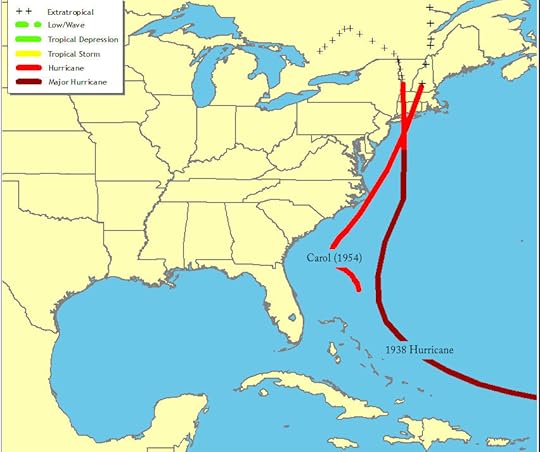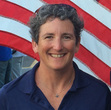Carol Newman Cronin's Blog, page 49
November 3, 2016
Filling the Idea Tank
Most authors have had at least one reader/fan ask reverently, “Where do you get your ideas?” As if writing were a game of Clue, the answer was “in the billiard room,” and a jumbled heap of ideas lay just behind the pool table—waiting for me to creak open the door, blow off the dust, and bring the next one to life.
Ideas may come easily to fifth graders, but trust me, I don’t have a room full of them. Instead I find the best way to collect ideas is to get outside, hunting and gathering experiences that will eventually form the building blocks of a story. In the best of times, I’m not even aware that I’m picking anything up, much as a beach walker stoops to grab an occasional shell that catches her eye… and then another, and another, until a half hour later, she realizes her hands are full.

Photo courtesy PaulCroninStudios
Open air allows my mind to wander. (That’s probably why in a 2015 story, I imagined inspiration wafting in through an open window. ) Ideally I don’t even realize the significance of an unexpected smell or the splash of water on bare toes, because I’m too caught up in the moment. It’s only with adequate time and space that random sights, sounds, and sensations develop into a story idea. Then the trick is to follow where they lead, polishing them into the best they can be—even if the story evolves into something quite different. An idea sparked by a leaf blowing down the street led to a story about a boy escaping school in a rowboat, which eventually turned into a book about a boy and a schooner and a hurricane.
This process would never get started if I didn’t put myself in situations that enable a skin-tingling sense of discovery. And while that is its own reward, I’ve also learned to trust that I might eventually build something completely unexpected from what I find in the real world.
You may think all of this is simply shameless justification for goofing off outside, and you have a point. But for me the key to happiness is to keep the idea tank filled, which creates a wonderfully vicious circle: happiness leads to ideas, and ideas to happiness. And that circle would never have formed if I had been forced to stay inside, playing pool in that musty billiard room, searching endlessly for a non-existent tangled heap of ideas.
October 27, 2016
How to Make Things Happen
Last week, I competed in the Snipe World Masters in Nassau, Bahamas. Ten days before the regatta officially opened, Nassau was hit by Hurricane Matthew, the biggest storm to affect the island since 1929. Two days later, the organizers made the final decision to go ahead with the event—even though at that point, most of the island was without power and all the club’s docks had been destroyed. Despite these challenges, they committed to hosting a major championship. And it went off without a hitch.
There are a lot of lessons here, but here are a few that apply well beyond the sailing world.
1. Dare to succeed
When faced with a major upset to plans, it’s all too easy to say “I can’t” instead of “I’ll try.” Royal Nassau Sailing Club members had spent the past year getting ready for this event, so why should they let a category four hurricane keep it from happening?
2. Be prepared to improvise
We needed docks to tie up boats, so a few locals salvaged some temporary floats and installed them in time for the practice race. They weren’t perfect, but they allowed boats to tie up while waiting to either hoist out or to go sailing. (Here in the US, liability concerns would probably have interfered with this make-do approach.)
3. Provide context
We could all see the devastation, but we might not have been so understanding if the locals hadn’t been constantly communicating their ongoing challenges and adaptations. They repeatedly asked us to be patient, reassuring us that this wasn’t normal operating procedure for anyone. And because we could see how hard they were all working to make the event successful, we were.
4. Keep smiling
A good attitude goes a long way. It’s all too easy to take whatever we’re doing (whether it’s for fun, for work, or for some combination of the two) way too seriously.
Linda Epstein and I finished 8th out of 35 boats at the event, a good result for the lightest team during what turned out to be a windy week. I like to think that our tourist dollars benefited the local economy more than staying away (and reducing the work load) would have, but it’s impossible to know for sure. Regardless, watching the Bahamians make the regatta happen has reminded me how far a can-do attitude can take us all. And along with all the sun, salt, fierce competition, and laughter I enjoyed, that will keep me motivated for a long, long time.
For more details about the people who inspired this post, read Jimmy and Lori Make It Happen on SnipeToday.
October 20, 2016
Creative Slogging: Cleaning Up After Myself
The joy of blogging is that I usually get to write about what I’m excited about. This week, I’m not. Excited. About. Writing.
I’m currently slogging through edits of the new book, which makes it sound like the writing is done. It’s not, but the only way to see what’s still missing is to clean up what is already there. Kind of like doing all the dishes so you can wipe down the counters.
I have to say this is not the fun part.
If I were more of an outliner and less of a complete seat of the pants writer, maybe this stage wouldn’t be quite so necessary or time-consuming. But I’ve tried outlining, and it doesn’t work for me. For whatever reason, my characters never seem inclined to follow a strict planned-out path.
So I’m cleaning up after myself. Unnecessary words, phrases, and even whole chapters go into the “history” folder. (I’m not quite ready yet to put them in the trash.) It would be much easier to edit if this were someone else’s work, because the rabbit holes would be so much more obvious. Instead I get sucked down a few here and there, because I’m just as interested today in what my characters think about a particular topic as I was when I first wrote it out… even if it’s totally irrelevant to the story I’m trying to tell.
I’ve been through this before with previous books, so I understand this is a crucial part of my creative process. But previous books have not included so many different characters, and it simply takes longer to get to know a larger group of people. So there are more wasted words to toss out now.
I believe in this story and what will come out of slogging through this part. And my writing joy will return… so please stay tuned.
October 13, 2016
Wanted: Background, Context, and a Definition of Done
One of the biggest challenges a freelancer can face is getting air-dropped into a partially completed project and asked to finish it off. Most likely it is complicated—if not, it wouldn’t still be in progress. Usually, there is a deadline that is at best unrealistic, and at worst already missed. And frequently, the very first step is cleaning up someone else’s mess. That someone could be a current employee, former employee, or previous subcontractor, and each situation brings its own challenges. Which would you prefer: on-site egos, lost data, or burned bridges?
To be successful, freelancers need enough background on a project to avoid making the same mistakes all over again. But what one company shares to be helpful might seem like airing dirty laundry to another. And even when clients explain what went wrong before, they often blame specific people rather than systems that are still in place. After all, it’s hard to explain what the forest looks like when you’re living in the shadow of all those tall trees.
None of us wants to be the next ex-consultant. So how do we identify systemic issues that may doom us to failure as well? There are no easy answers, but here are a few general tips I’ve picked up in the past several years:
1. Ask where things went wrong before. Explain the need for context, so no one thinks you’re just digging for dirt.
2. When employees talk among themselves, listen in. (Yes, this could be called “eavesdropping.”) Once you tune out the chronic complainers, the tone, topics, and wording will tell you a lot about company culture. That will help add perspective to what you’re hearing through more official channels.
3. Demand an up-front Definition of Done. And if nobody can tell you what the “finished” version should look like, run away.
4. Don’t be afraid to speak up. Systemic problems are often a lot easier to see from the outside. Make sure you clearly communicate any concerns you have about deadlines, scope, or feasibility. Go first to the person who hired you—and then, if necessary, to the next person up the corporate ladder.
5. Watch out for mission creep—both your own, and the company’s. Even when asked, don’t try to tackle problems beyond the ones you’ve been specifically hired to solve.
As freelancers, we usually can’t see the whole forest any better than our clients can, because we don’t know enough about other issues the company may be facing. But we can help our clients see a different clump of trees within that dark forest. And maybe, just maybe, we can complete a project that has stymied others before us. If so, we’ve probably earned ourselves a happy customer who will hire us back again and again.
October 6, 2016
Hurricane Watching
For New England sailors, fall means hurricane watching. Some years are quiet, and we go about our lives and enjoy our boats until the weather turns too cold for sailing. Other years, a named storm inspires us to haul out ahead of the usual date. And while the technology and predictions get better with each event, the basic ritual (watch and worry, react or procrastinate) remains the same.
Each person has a different ritual, and it’s usually completely independent of any mapping, predictions, or actual risk. It is affected by whether we have boats in the water or not, and by how protected each harbor is for the predicted wind direction. But most of all, it’s determined by our personalities. The worriers start losing sleep as soon as a storm is named; the planners haul their boats too early; and the procrastinators do nothing until it’s too late.

Two hurricane tracks from 1938 and 1954 each affected New England, but their local impacts were quite different. Maps courtesy http://www.nhc.noaa.gov
I’ve written two books about hurricanes that took place, respectively, in 1938 and 1954. Here in Rhode Island, the Hurricane of ’38 is still the basis for comparison for all other storms. On Cape Cod, Hurricane Carol is the standard comparison. Only 40 miles apart, two areas were affected completely differently by those two storms. Which is why even the slightest twitch in predicted track is watched and discussed so avidly by all of us.
Currently we’re watching Matthew, who has already stormed the Caribbean and Bahamas and will likely hit Florida later today. At one point it looked like Matt might sail right up the Intercoastal Waterway, like a fall snowbird in reverse; now it looks like Hatteras will send him packing, back out to sea. Tomorrow, the picture may change once again.
A friend recently turned me onto Mike’s Weather Page, which puts all the various maps in one location. (On mobile, for better or worse, it uses your location to customize the maps.) Mike also does very lengthy Facebook Live videos, which are somewhat useful and definitely entertaining. At the very least, it gives the rest of us weather geeks something to do as we watch and wonder and stew about the latest predicted track.
With so much of life within our control, it’s good to be reminded that even the storms we name are not impressed with our daily concerns. Hurricanes don’t pay any attention to how carefully we plan or how much in control we would like to be. They are bigger than we are, and how we deal with them tells us more about ourselves than about the actual storm.
In the words of one Florida friend, “If you try to plan around hurricanes, you’ll never do anything.” And in the words of another, “At least with hurricanes [relative to earthquakes], you can see ‘em coming and get out of town.”
So whether you are a worrier, a planner, or a procrastinator, stay safe… and keep watching.
September 29, 2016
Crewing Lessons: Those Unsung Chameleons
I’ve never enjoyed singlehanded sailing. Communicating efficiently, working together to go faster, and of course sharing sea stories are all too big a part of my racing enjoyment. As Jody Swanson Starck used to say about sailing singlehanded boats, “Who would you have lunch with?” So for the past twenty years, I’ve raced exclusively with at least one teammate.
I started out as a crew, and a huge percentage of what I know about sailboat racing came from soaking in the chatter of many great skippers: Ed Adams. Pat Connerney. Andrew Pimental. Henry Filter. George Szabo. Greg Fisher. Cory Sertl. Betsy Alison. The most important lesson of all came from sailing with such a wide variety of personalities, which taught me the value of being a chameleon. Skippers set the boat’s tone, and crews need to fit into that—because butting heads is both quite slow and not at all fun.

Team Severn Sailing finished 4th at the Hood Trophy. ©Bruce Durfee
After fifteen years of steering my own boat, the chameleon thing doesn’t come quite as easily—but when a few invitations came in this summer, I still enjoyed stepping back into a crew position. It’s a thankless job, but also a really important one—and a great way to learn a different segment of our sport. It’s also much lower stress than putting together an entire program. And last but certainly not least, it’s a great reminder of how crucial all those unsung crew chameleons are to any good result. Here are a few lessons I learned (or maybe relearned) this summer:
Stay positive. Crews don’t have the luxury of dwelling on mistakes (even if the skipper makes a blunder so obvious you want to scream back, “what were you thinking?”)
Show up physically fit. Trimming/setting/dousing sails is almost always harder than steering.
Listen well. As either skipper or crew, it’s all too easy to tune out what’s being said, especially if the chatter is too constant or too monotonous—which means we often miss significant suggestions or instructions. Reduce the chatter to what’s important—and keep your ears open, no matter what position (on the boat or in the fleet) you are in.
Do your own job to the very best of your ability. It’s impossible to steer a boat from the crewing position (though it is, of course, possible to make boat positioning decisions with the jib sheets). It’s also impossible to clear the spinnaker sheet off a bow cleat without leaving the helm. Doing the best we can wherever we find ourselves on a boat is what makes us good teammates. And that, of course, is the most important skill of all.
So apologies (again) to my forward teammates for all the bonehead skipper moves I’ve made, and all those excellent suggestions I’ve tuned out over the years, and thanks for going sailing with me! I may not be as much of a chameleon as I was in my twenties, but I can still learn and adapt—and going back to crewing will definitely help me do a better job in the back of the boat.
September 22, 2016
Rewarded for Playing Hooky
A few weeks ago, I said “yes” when someone invited me for a Wednesday morning boat ride, even though the obvious way to finish my next book was (as the famous quote goes) to “apply the seat of my pants to the seat of the chair and write.” And I hadn’t been aboard for five minutes before I was rewarded for this irresponsible behavior, by learning something quite important—something that had nothing whatsoever to do with boats.
The book has a large cast of characters who have a variety of interests and skills. One of them is a retired art dealer whose savings have run out; in order to support herself, she has secretly turned to forging other people’s work. Now, I don’t know anything about how someone would begin forging important pieces of artwork, so that’s been on my research list for quite awhile—but I didn’t even really know where to begin. Imagine my surprise when the starting point turned out to be on board a 1928 Oyster Buy Boat.
We hadn’t even left the dock when the owner proudly showed me a painting over the dining table. It had been copied from a postcard of the original, he said. “Wow—how did they do that?” I asked. (If I were a drug-sniffing dog, my nose would’ve started to twitch.) “Giclée,” he replied, quite off-handedly. “How do you spell that?” I asked. He just shrugged, but already my writer’s brain was putting together the letters; apparently, I’d heard the word before. And now I’d been reminded of it, quite unintentionally, by a new acquaintance, just when I needed this information—all because I got my seat out of its chair and onto his boat.
Now I don’t meant to imply that his copy is a forgery; copying is fine as long as you don’t try to pass it off as someone else’s original. The process is what I’m interested in, even though I haven’t yet determined if it’s the technique my character used.
It wasn’t the first time I’ve been rewarded for playing hooky, and hopefully it won’t be the last. Tying together the seemingly unrelated details I pick up on such adventures is one of the greatest joys of being an author. When we’re open to receiving new experiences and information, the world is full of quiet coincidence.
Last spring, I went quite deliberately to Oxford, MD, to learn more about another character in the book. On one of my morning walks, I spied an oyster shell on the beach that has since turned out to be so significant to the story, it will probably figure in the title. No trip to Oxford, no shell—and I’d probably be writing a very different book.
My imagination is capable of large leaps when my seat is applied to its chair, but it needs the spark of actual experience to truly set it free. By adding in the details that can only be discovered while playing hooky away from my desk, I am much more likely to create a work of fiction that seem like it actually takes place out there, in the real world.
September 15, 2016
Boats Make Memories
Last Wednesday, I went for two unrelated cruises on two very different boats. The first vessel is powered by a Detroit Diesel 671, and at seventy-two feet is the biggest private vessel I’ve been on in quite some time. The second one is sail-powered—and she could probably be carried as deck cargo on the first one’s foredeck. Two completely different craft, each designed to do a very different job. And yet the similarities between the day’s two adventures are what leap out at me now.
Motoring in the morning….
The morning boat ride came about through my friend Margaret Podlich. We’ve shared a very wide variety of boating adventures: regattas in France, China, and several states around the USA; stand up paddling on her local bay; even a powerboat ride or three. Now we can add a new item to that list: crossing Narragansett Bay, from Newport Harbor to downtown Jamestown, on the 1928 Oyster Buy Boat Coastal Queen.
For those of us who like to boat gawk, there are certain boats we always notice—and Coastal Queen has long been one of my favorite sights. Over the years, I’ve spotted her distinctive profile at several points along the eastern seaboard, since she winters in Palm Beach, FL. So even though I’d never set foot aboard her, this invite felt like a chance to finally meet someone I’d always admired from afar. And I wasn’t disappointed; she is as beautiful and well-maintained up close as she appears to her dock-walking fans.
The reason for the midweek delivery back to Jamestown was Tropical Storm Hermine. Coastal Queen had ridden out fifty knots of northeast breeze in the most protected corner of Newport’s inner harbor—as such an elderly dowager rightly deserves. Once the wind died down, her captain needed to extricate her from the tight dock space, and we were happy to help handle docklines. The reward was a lovely three mile cruise out of Newport Harbor and across the Bay, which provided a rare chance to look down on rather than up at even the largest sailboats—and photos that will serve as a reminder of another great adventure with Margaret.
…Sailing in the Afternoon
The afternoon boat ride also started with Hermine cleanup—helping two of my lifelong friends, Chip and Dave Robinson, bend the sails back onto Catspaw, the family’s Herreshoff Rozinante. Once we’d finished, it seemed only logical to take her for a sail. We took turns steering and catching up, and though silence was always an option I don’t remember any—we all had too much to talk about. Somehow it’s easier to share what matters while enjoying an easy harbor tour—despite frequent interruptions to discuss the finer points of sail trim, or to admire other boats.
On the surface, these two experiences seem quite different: riding in an elegant horse-drawn carriage, compared to darting around in a classic roadster. But here’s the underlying similarity: even while both adventures were actually happening, I was fully aware of making memories and sharing a few special hours with friends.
There’s something about being on the water that brings most of our day to day concerns into better perspective. Priorities shift back to the basics: weather, navigation, seamanship. We take more deep breaths, clearing our lungs and brains with clean salt air. And when we get back to the dock or mooring, whether it’s three or thirty or even a thousand miles later, all those land worries no longer seem quite so important.
The day after these two adventures, I took a few local friends out on our Herreshoff Marlin, Matsya, in what hopefully will become an annual way to say farewell to summer. I took no photos, but I still savored the time with them, sharing memories of previous sails and catching up on the local waterfront news. We always enjoy getting together, but we seem to remember our boating visits much better than any of those shared drinks or dinners ashore.
Boats help make memories. The actual vessel doesn’t have to be as special as these three were—though obviously the warm embrace of a varnished coaming is always an added bonus. All that really matters is getting away from the land for a little while, in the company of a few special friends—the ones who enjoy being on the water as much as I do.
September 8, 2016
Book Review: Belgravia
I picked up Belgravia for the same reason many others will do so: because it was written by Julian Fellowes, the guy who wrote, produced, and directed Downton Abbey. The book publishers understood this; right on the cover it says “from the author of Downton Abbey.” The book’s designers understood it too; the black, white and gold cover smacks of a regal past. The only person who doesn’t seem to care particularly why we are all reading it is the author himself. All he wants to do is tell a story.
And that, of course, is why I (and all the others who pick up this book out of nostalgia for a recent TV show) kept turning each of its 402 pages. Like Downton Abbey, Belgravia draws us into a world filled with characters we quickly grow to care about. But the story is set a half century earlier, so it’s only the tone and style that are similar. The characters and plot are both products of their time; Downton Abbey would’ve seemed positively racy to these folks.
Originally published as a weekly serial, most of Belgravia takes place in mid-nineteenth century London and centers around the Trenchard family, who have made their money in trade. The patriarch James is described by his wife as a “social mountaineer,” a term that describes perfectly his need for acceptance at a much higher peak in society than where he was born. Social mobility was pretty much unheard of in the 1840s, so when lines are crossed the results are scandalous. Once a cover-up is attempted, small coincidences lead to large twists and turns that kept me turning the pages right to the end.
No spoilers here, but the ending was a complete surprise—and yet the perfect wrap-up to this story. Which might sound rather familiar to Downton Abbey devotees.
The plot hinges on the multi-generational fallout caused by breaking the strict rules of society. In the writing, Fellowes breaks a few rules himself. Current wisdom is for authors to stick closely to the voices of their characters, rather than holding court as an omniscient narrator. But Belgravia starts out in the most distant way possible, with a Great Gatsby-esque riff about the past. According to Fellowes, the past is “a foreign country, where things are done differently.” But some things haven’t changed that much, he says; this story is “only too like the dramas being played out in our own ways, in our own time…”
And then without anything more than a line-break of transition, he drops us right into the story—just after what will turn out to be a key event has taken place.
The only thing that disappointed me about this book was the editing. Style-wise it may have been a choice to leave so many rambling sentences in place, though I suspect it was just laziness; some sections read like the first draft of a screenplay. Tightening the prose would’ve made this enjoyable book into a masterpiece.
And there’s certainly no excuse for a top-notch publisher (and a named editorial consultant) to miss so many typos. Most were all too common spell-check errors like her/here or hear/here, but one in particular was quite alarming:
“Maria Grey was wandering aimlessly through the rooms. She saw her mother conversing with my great aunt, and rather than join them for the usual discussion…”
That “my great aunt” made me wonder if the book had originally been written in the first person, and then changed over to third person omniscient so more points of view could be covered. Regardless of the reason, such a glaring error should’ve been caught and corrected before publication.
Thanks to Julian Fellowes’ unique ability to create a scene and then drop breadcrumbs all around to keep things moving along, typos and point of view errors won’t distract most readers from the story. Playful and yet historically accurate, this was a nice reminder of why we all became so caught up in Downton Abbey. As Fellowes says in that out of place and yet poignant opening paragraph, “Ambition, envy, rage, greed, kindness, selflessness, and above all, love have always been as powerful in motivating choices as they are today.” Few authors could have so successfully woven together so many different emotions into just one book—even a book that runs to 400 pages.
For more, visit the Julian Fellowes Belgravia website. And don’t forget to support your local bookseller.
September 1, 2016
Fiction Writing: The Art of Dropping Breadcrumbs
I’ve hit that awkward stage.
I’m talking about my new book. (In life, fortunately, I’m feeling more comfortable with myself every day.) The beginning is pretty well set, and I know how the story will end even if I don’t have all the details fully fleshed out quite yet. The big issues are established, and a few that looked intriguing in the beginning turned out to be just confusing diversions, so they’ve been dropped. Hopefully the result is a plot line that seems quite inevitable.

In every great story, there’s a lot we don’t see going on below the surface.
You’d think it would all be easy sailing at this point, but here’s why instead this is the awkward part: now I have to word-paint all those scenes to life, so you can see them as clearly as I do. And then I have to drop just enough breadcrumb hints along the way to make that ending seem like the only logical conclusion. It’s exhausting. Especially since before I can carefully place all those breadcrumbs on the page, I have to first bake the loaf—and then crumble it into tiny, seemingly unrelated, individual pieces.
I’m overworking the bread metaphor here, so let me give you a specific example. A few blogs ago I introduced you to Lloyd, the book’s bad guy—who I still don’t like. But I do have a little more sympathy for him these days. Since writing that blog, I’ve learned more about a key childhood incident that helped turn him into such a meanie.
Since Lloyd grew up long before the book begins, what matters from his past has to be dropped into the present without making it too obvious or odious. It’s like the difference between a fantastic historical novel and a straight dry list of historical facts; to keep you reading, the key bits of information need to be hidden within the story’s natural flow. Hence the breadcrumb approach: drop a little bit here, and then add a little more there, a few chapters later. Each character develops as the book does, drawing us further into the story—until eventually, we find our way to the perfect ending.
Of course it’s not just Lloyd who has a past that matters—all the adult characters, even the minor ones, are products of their upbringing in one way or another. So first I have to “learn” what each of their pasts looked like. Then I have to figure out what’s really relevant to this particular story. And last but not least, I have to convey those few key details in the least obvious way possible. Readers don’t need to be told directly that Declan, my main character, is left-handed, but as the author I must remember—so his gestures stay consistent from one chapter to the next.
(Meanwhile, I’m still trying to figure out where that scar on Dec’s left temple came from.)
This is my fourth book, so I can see the pattern now—and that makes it slightly easier to work through this awkward stage. This is where fiction writing becomes work rather than pure play; where the rubber hits the road, where the tough get going.
Since I’m overdoing the metaphors again, I’ll let you get back to your day. Thanks for reading, and if you have any suggestions for how a well-coordinated guy would come to have a short deep scar on his left temple, please let me know.










